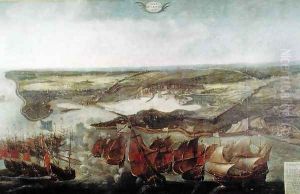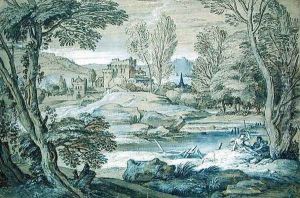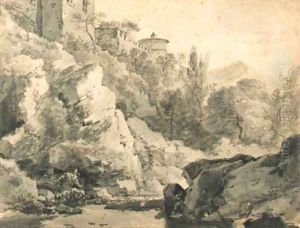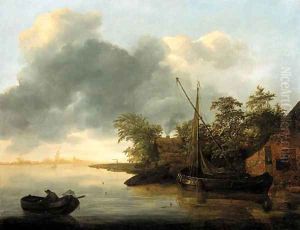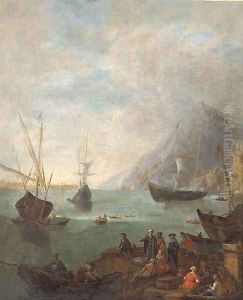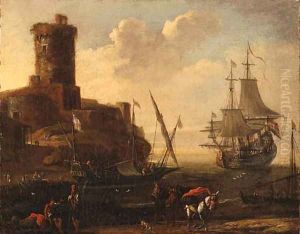Adrian van der Cabel Paintings
Adrian van der Cabel, also known as Arie or Ary van der Cabel, was a prominent Dutch Golden Age landscape painter, born in Rijswijk, near The Hague, in 1631. His early life and education in art remain somewhat obscure, but it is known that he was a pupil of Jan van Goyen, a master landscape painter of the era, which had a significant influence on van der Cabel's style and choice of subjects. Van der Cabel's works are characterized by their detailed and refined landscapes, often featuring rivers, ships, and pastoral scenes that reflect the tranquility and beauty of the Dutch countryside.
In the mid-1650s, van der Cabel moved to Lyon, France, where he spent most of his career. This move was significant for his development as an artist, as he was exposed to and influenced by the French landscape tradition. While in France, he adopted the French version of his name, Adrien van der Cabel, and his work began to show a fusion of Dutch and French artistic styles. Despite his relocation, van der Cabel's art retained a distinctly Dutch quality, particularly in his attention to detail and his depiction of light and atmosphere, which remained reminiscent of his early training under van Goyen.
Throughout his career, van der Cabel enjoyed considerable success. He was patronized by prominent individuals and his works were sought after by collectors in both the Netherlands and France. He was known for his versatility, producing not only landscapes but also seascapes, harbor scenes, and occasionally genre scenes and portraits. His landscapes often included figures and animals, which he rendered with precision and a sense of life, adding depth and interest to his compositions.
Van der Cabel's contribution to the Dutch Golden Age of painting, particularly in the genre of landscape painting, is significant. He was part of a movement that saw the landscape as a worthy artistic subject in its own right, rather than merely as a backdrop for historical or mythological scenes. This was a shift in artistic focus that would have a lasting impact on Western art.
Adrian van der Cabel died in Lyon in 1705. His works have continued to be appreciated for their beauty, technical skill, and the window they provide into the Dutch Golden Age's landscape tradition. Today, his paintings can be found in museums and private collections around the world, testament to his enduring legacy as a master of the landscape genre.
